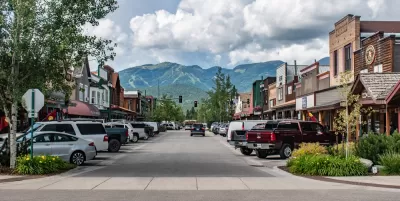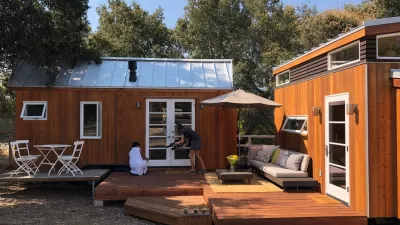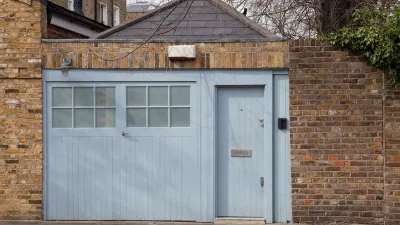Recently approved revisions to the city’s accessory dwelling unit regulations prioritize long-term rentals to increase housing affordability for local renters.

In May, the Whitefish, Montana city council took a step to address the city’s lack of affordable rental units, writes Nathan Dugan, President of Shelter Whitefish, in the Whitefish Pilot, in an opinion piece supporting the new regulations.
“On a 4-1 vote, the council passed a new accessory dwelling unit (ADU) ordinance that will serve to provide homes that meet the needs of many renters in Whitefish, including teachers, firefighters, bartenders, and many others who are struggling to find affordable housing options close to work, play, and social lives.” Starting on June 16, ADUs can be built in all zoning districts without requiring a conditional use permit (CUP).
“Additionally, the new ordinance re-legalizes the long-term rental of the ADU regardless of the owner’s residency. In a town that is already inundated with out-of-state investment and primary homes that sit vacant most of the year, this is an incredibly important step to unlock housing choices for renters close to our downtown core — where they can easily avoid becoming a part of the traffic problem on the way to work, play or school.” The ordinance additionally incentivizes renting to long-term residents. “In exchange for a minimum of five years of long-term renting via 12-month leases and no more than 30 days of vacancy between leases, a homeowner will be allowed to build an ADU up to 800 square feet without building an additional and expensive parking space, and will be eligible for financial incentives like impact fee reimbursement.”
The ordinance also eliminates the requirement that ADUs be located above a garage, a motion that Dugan supports. “These low-impact and modest buildings will continue to maintain the visual character of our neighborhoods while preserving the mixed-income “people character” that makes Whitefish the welcoming small town that we all love, and that many of us moved here to be a part of.”
FULL STORY: Opportunity for neighbors, not developers, to build homes in Whitefish

Trump Administration Could Effectively End Housing Voucher Program
Federal officials are eyeing major cuts to the Section 8 program that helps millions of low-income households pay rent.

Planetizen Federal Action Tracker
A weekly monitor of how Trump’s orders and actions are impacting planners and planning in America.

Ken Jennings Launches Transit Web Series
The Jeopardy champ wants you to ride public transit.

Crime Continues to Drop on Philly, San Francisco Transit Systems
SEPTA and BART both saw significant declines in violent crime in the first quarter of 2025.

How South LA Green Spaces Power Community Health and Hope
Green spaces like South L.A. Wetlands Park are helping South Los Angeles residents promote healthy lifestyles, build community, and advocate for improvements that reflect local needs in historically underserved neighborhoods.

Sacramento Plans ‘Quick-Build’ Road Safety Projects
The city wants to accelerate small-scale safety improvements that use low-cost equipment to make an impact at dangerous intersections.
Urban Design for Planners 1: Software Tools
This six-course series explores essential urban design concepts using open source software and equips planners with the tools they need to participate fully in the urban design process.
Planning for Universal Design
Learn the tools for implementing Universal Design in planning regulations.
Heyer Gruel & Associates PA
Ada County Highway District
Institute for Housing and Urban Development Studies (IHS)
City of Grandview
Harvard GSD Executive Education
Toledo-Lucas County Plan Commissions
Salt Lake City
NYU Wagner Graduate School of Public Service





























